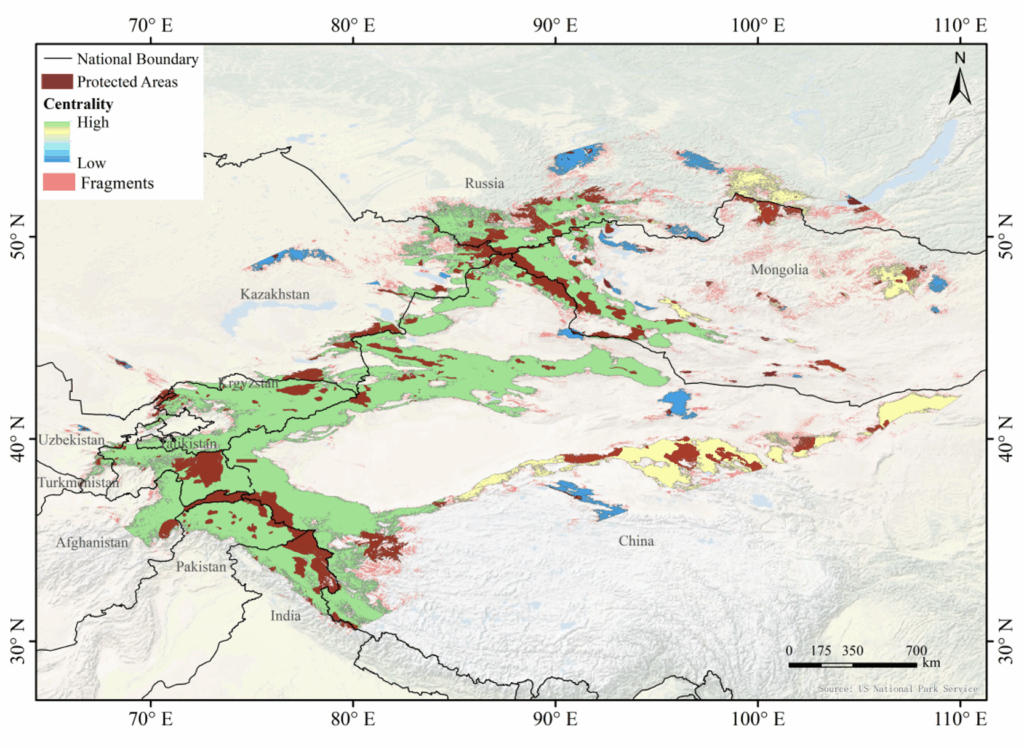https://www.cas.cn/syky/202507/t20250718_5076696.shtml
https://www.sciencedirect.com/science/article/pii/S1470160X25008015
Cross-border species protection is a core challenge facing global biodiversity conservation. The difficulty lies in how to quantify the responsibilities of countries in cross-border species protection.
The northern goat (Siberian ibex) is a key species in the Central Asian alpine ecosystem, with a distribution area spanning 11 countries. At present, the species faces multiple survival challenges such as climate change, habitat fragmentation and cross-border infrastructure construction. At the same time, as the main prey of endangered carnivores such as snow leopards and an important indicator species of the functional integrity of alpine ecosystems, the northern goat has a significant umbrella effect. Therefore, in order to effectively protect the northern goat, a scientific and reasonable transnational protection responsibility allocation mechanism needs urgently to be established.
In response to the above problems, the CAS Xinjiang Institute of Ecology and Geography constructed a multi-level technical analysis framework based on 5186 distribution records obtained from field surveys from 2010 to 2023. The study identified 48 ibex landscape protection units by integrating species distribution models and systematic conservation planning tools, and objectively evaluated the national conservation responsibility levels of 11 ibex distribution countries using the entropy weight method based on the three dimensions of ecological importance, conservation effectiveness and national capacity.
The study found that the current total area of suitable habitats for ibex is 1.4053 million square kilometers, mainly distributed in mountainous areas in central and northern Asia. Future climate change scenario forecasts show that its habitat area will shrink significantly, while the rapid expansion of border fences and infrastructure construction has caused habitat fragmentation and corridor cost-weighted distance to increase significantly, posing a more direct and urgent threat. At the same time, the study identified 48 landscape protection units. Among them, 6 cross-border protection units account for 83.70% of the total area, highlighting the urgency of implementing cross-border protection actions for ibex. Further, in the quantitative assessment of national responsibility, the 11 ibex distribution countries were divided into three responsibility levels: high, medium and low. Among them, China, Turkmenistan and Mongolia are high-responsibility countries; Russia, Kazakhstan, Tajikistan and India are medium-responsibility countries; Uzbekistan, Kyrgyzstan, Afghanistan and Pakistan are low-responsibility countries.
The study provides a reference example for the quantification of global protection responsibilities for transboundary migratory species, which will help promote countries to carry out transboundary endangered species protection actions and carry out more fair and effective international cooperation based on objective standards.
FIGURE: Distribution map of protection gaps between Siberian ibex landscape protection units and existing protected areas (only protected areas within the scope of landscape protection units are retained in the figure)

